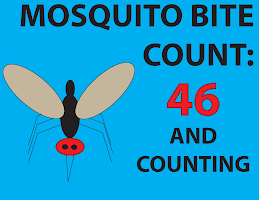This is just to give my friends back home an idea of the life of the Pedi-Cab driver, if there are any corrections to be made, please enlighten me! Thanks.
Since the average time to get up in the morning is around 4:30 A.M. due to the extreme number of roosters in the area, a pedi-cab drivers morning starts very early, as there are many clients that need service that early in the morning. The pedi-cab driver goes and gets his/her (although I have yet to see a “her”) pedi-cab from the storage unit they use for the night time. This storage unit is typically rented by the owner of the pedi-cab, who may/may not be the driver.
The long day begins by patrolling the streets for prospective customers. Granted, I have not been up this early, so I do not know how busy the streets are this early in the morning, but will soon discover. The day continues with the driver patrolling the streets looking for customers. A typical ride in Catarman is about 200 meters and costs anywhere from 3 to 5 pesos (although they typically charge me more because I am a foreigner… not a big deal). It takes about 2 minutes and then the customer is dropped off and another customer, hopefully, is picked up. There are two approaches to being a pedicab driver. The first, is what I have just mentioned, patrolling the streets and actively seeking out clients. This way is probably the way to get the most customers, but it is also the most risky to get customers. It is very happenstance how a driver gets a customer, being in the right place at the right time plays a major role in the income generated by this method.
The second form of generating business is to form a queue (line) at some of the “hotspots” around Catarman. These hotspots are few, but there are always potential customers. The only problem with this method is that there are always other pedi-cab drivers waiting for these customers. At times, the line of pedi-cabs can stretch to 50-long on either side of the runway (one of the hotspots) and no queue is really formed outside the bus terminal, but there are many many pedi-cabs. While this is a sure-fire way of getting a consistent amount of business, I would assume this also has the least amount of turnover of customers for the drivers… possibly 25-30 customers per day, whereas, the other method might generate up to 50 customers per day.
The pedi-cab driver cannot afford to take a day off, considering their daily income is only about 100 to 150 pesos or about 2,800 pesos a month (just below the minimum wage line of 3,000 pesos a month). They work seven days a week and they are always seeking out new business and work very hard.
To give you an idea of the pedi-cab driver population I will give you some food for thought. I have been here for over six weeks and I have not had one pedi-cab driver that has been the same, that I know of. The ages of the pedi-cab drivers ranges (from what I believe) is 12 to 65. There are some pedicab drivers that look like they played college basketball (they are very tall and muscular) and some that look like they might be a horse jockey (very small and thing). There is no question on their strength however. Every pedi-cab is the equivalent of a beach cruiser with only one speed. There are many inclines in Catarman and pedi-cab drivers are able to ascend them with little struggle (although some struggle more than others), even with a passenger (or three) on the bike.
All of the pedi-cab drivers are very nice and talkative (even though their English and my Tagalo are limited), but we converse on my way to my destination. The typical day for a pedi-cab driver ends around seven p.m. (a 14 hour day). There are some, probably 30% or so, of pedicab drivers that last through the night and work until 10 or 11. I would assume these are the younger pedi-cab drivers that do this, as they would have more energy.
Pedicabs Themselves: Every pedicab has three wheels, two of which are the bike and one is located on the side car. The side-car has a cover over it to shield the passenger from the rain and sun. The driver is typically seated well above the handle bars (I think so they can generate more power) and is typically not covered. Some, pedi-cabs, however, have a self-made cover that protects the driver from the rain and sun. Since the drivers are not protected from the sun, they typically wear long-sleeved t-shirts to avoid skin diseases. As a way to help pedi-cab drivers, the current Congressman of Northern Samar, Paul Daza, gave a gift to all pedi-cab drivers and habal-habal drivers. It is a long-sleeved powder blue t-shirt that displays the slogan for the Congressman: “Progess & Development for Nothern Samar”. The “P” and the “D” in progress and development are the initials of the Congressman, very clever.
Each pedicab has it’s own unique flare to it. Some are the same (I would assume these are the ones that are leased by the driver), but the majority of them have something unique to them. Some of them have covers for the driver, some are painted with a unique patern or colors. Some have accessories that distinguish their bike from other bikes.
Me in a pedi-cab: I have probably said this in a prior post, but pedi-cabs are not meant for a person of greater than 5’ 8”. For the first few days upon arriving in Catarman, I tried to lean back in the pedi-cab (like you would in a normal chair), but quickly found out that any bump we hit in the road would result in the crown of my head being wrapped by the top of the side-car, quite painful the first time. Recently, I have found that leaning far forward in the seat (with your elbows on your knees) is the most comfortable way to sit. While bumps are still very common, the “hitting of the head” is minimal. As far as bumps are concerned, the pedi-cab drivers try to avoid the pot-holes as much as possible, but some are inevitable. The pedi-cabs do not have shocks of any sort and some of the speed bumps in Catarman feel like I am am going to fall out when we hit them. In addition, I think it my be planned so that some of your change falls out of your pocket when you hit the bumps. Kind of like having a really comfortable couch only to have all of your change fall out of your pockets when you lie down.
All in all, the pedi-cab is a major source of transportation. Due to the extreme weather and heat, it is not ideal to walk everywhere. Thus, instead of like in a major U.S. city where taking a taxi is prevalent, people take pedi-cabs. It is convenient, fast and sometimes quite an adventure!
***All recollections of pedi-cab drivers and income are just observations by me, with no real factual amounts.






No comments:
Post a Comment